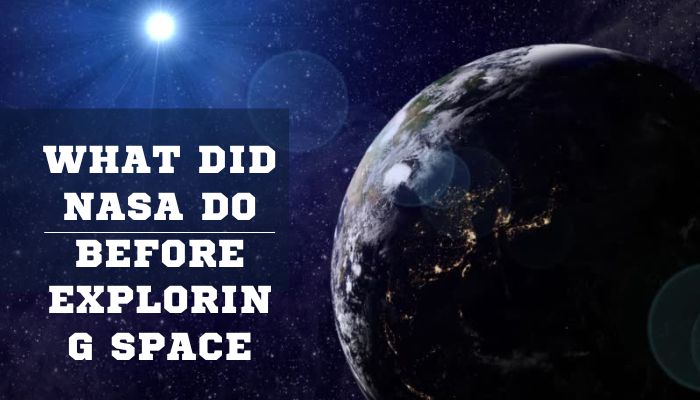Prior to becoming associated with space exploration, NASA had established roots in several vital fields that prepared the way for its upcoming endeavors. The National Advisory Committee for Aeronautics (NACA), NASA’s forerunner, and the advancements in aviation technology that ultimately enabled human space travel are deeply entwined in the organization’s history.
The National Aeronautics Committee Advisory Committee (NACA)
The formation of NACA in 1915 marked the start of NASA’s adventure. NACA was established to supervise and encourage aeronautical research, leading to improvements in the performance and technology of aircraft. The organization concentrated on enhancing speed, safety, and efficiency of flight—all of which were essential in both World Wars I and II. Significant advancements in aircraft design, including more aerodynamic designs and improved engines, were made possible by NACA research.
The Aviation Contributions of NACA
The NACA played a pivotal role in converting aviation from an experimental endeavor into a thriving industry. Their research facilities—the Langley Memorial Aeronautical Laboratory in particular became centers of creativity. During World War II, the United States’ air superiority was directly attributed to the work done here. Through enhancing aerodynamics and comprehending flight dynamics, NACA paved the way for subsequent improvements in aerospace.
The NASA Transition
1958 saw the merger of NACA into the newly established National Aeronautics and Space Administration (NASA) as the space competition between the US and the USSR grew more intense. NASA took over the research facilities, staff, and extensive archive of aeronautical knowledge from NACA. With this Did NASA Do Before Exploring Space change, the emphasis shifted from flying through the atmosphere to exploring space.
NASA’s Initial Projects: Spaceflight-Related
Prior to sending people into space, NASA worked on a number of important projects to comprehend the difficulties and create the required technologies. During this time, some of the major initiatives include:
NASA’s first significant endeavor, Project Mercury (1958–1963), sought to launch an American astronaut into space and ensure their safe return. The project included a lot of study on re-entry technologies, astronaut training, and spaceship architecture. John Glenn’s successful orbital mission on February 20, 1962, marked the project’s climax and made him the first American to orbit the Earth.
NASA and the U.S. Air Force collaborated on the X-15 rocket plane program (1959–1968) in order to create a fast rocket-powered aircraft capable of reaching the edge.
Satellite Development: NASA had a major role in satellite development even prior to the first manned space missions. The organization launched a number of early satellites to investigate cosmic phenomena, weather patterns, and Earth’s atmosphere. The advanced satellite networks that we now rely on for communication, navigation, and scientific research were made possible by these missions.
Research in Biology and Medicine: NASA was very interested in learning how space travel affected human health. The organization carried out a number of biological experiments, putting fruit flies, mice, and monkeys into space to investigate the effects of radiation, isolation, and microgravity on living things. The safety and welfare of astronauts on upcoming trips depended heavily on these research.
Advances in Space Technology
The development of space technology by NASA was essential to the launch of any real space exploration missions. The organization was tasked with developing spaceships, rockets, and life support systems that would enable humans to go beyond Earth’s atmosphere. Technology advanced quickly at this time, and NASA scientists and engineers worked nonstop to find solutions for the various problems that space travel presented.
The construction of the Redstone and Atlas rockets, which were crucial for sending the first American astronauts into space, was one of the major technological advances during this period. To guarantee the success of upcoming missions, NASA also concentrated on enhancing life support systems, spacecraft materials, and guidance and navigation systems.
Closing: Establishing the Groundwork for Space Travel
The work that NASA did prior to going into space exploration was crucial in setting the stage for the successes that would come later. The agency’s early initiatives were concentrated on creating the technology, know-how, and proficiency required for space exploration, but its NACA antecedents gave it a solid basis in aeronautics.
NASA’s pre-space exploration work was crucial to its success in the Space Race and beyond, from developing aviation technology to pioneering research in rocket science, satellite development, and human spaceflight. In addition to propelling humanity into space, this age of invention and discovery made NASA a global leader in science and technology, leaving a legacy that will continue to motivate explorers of the future.
